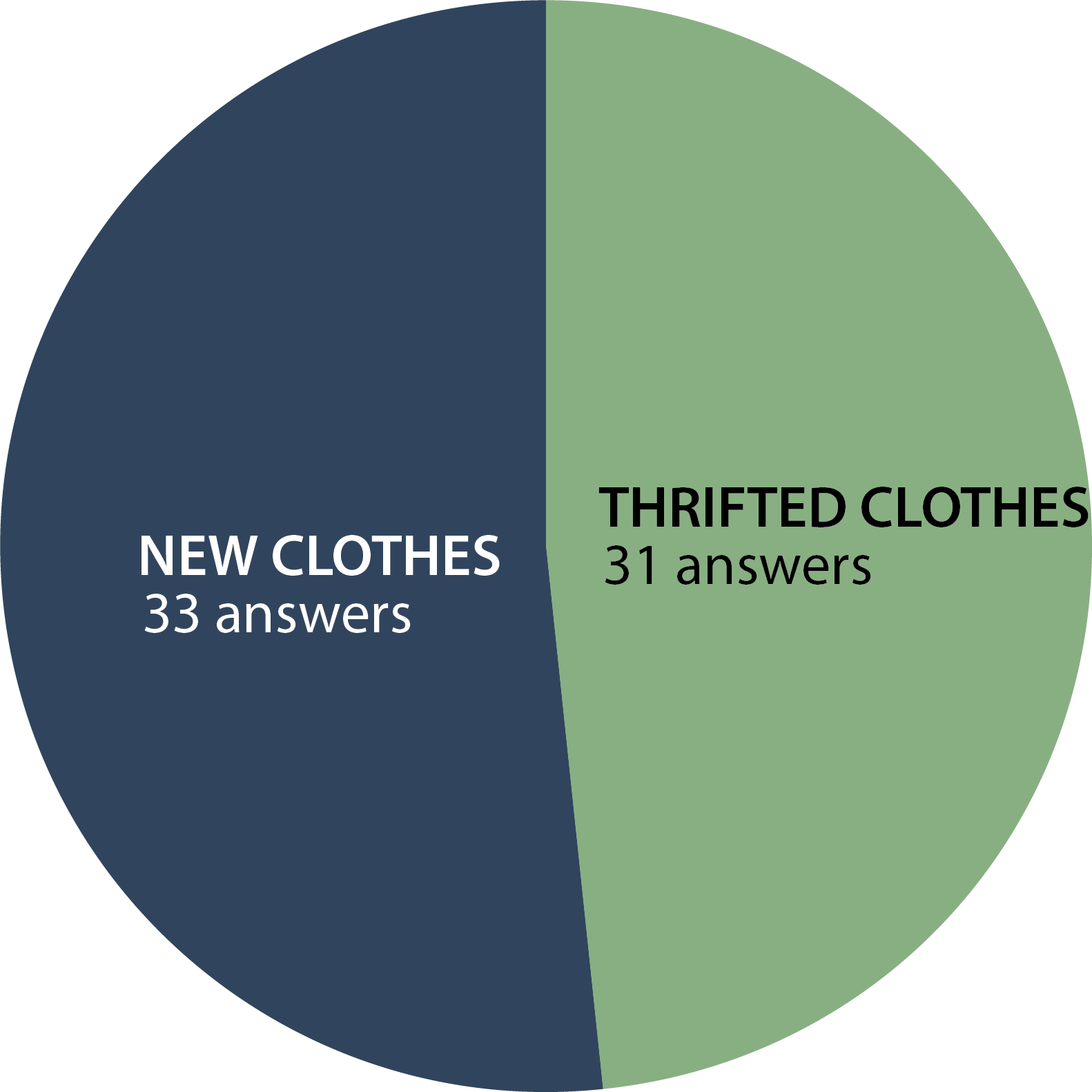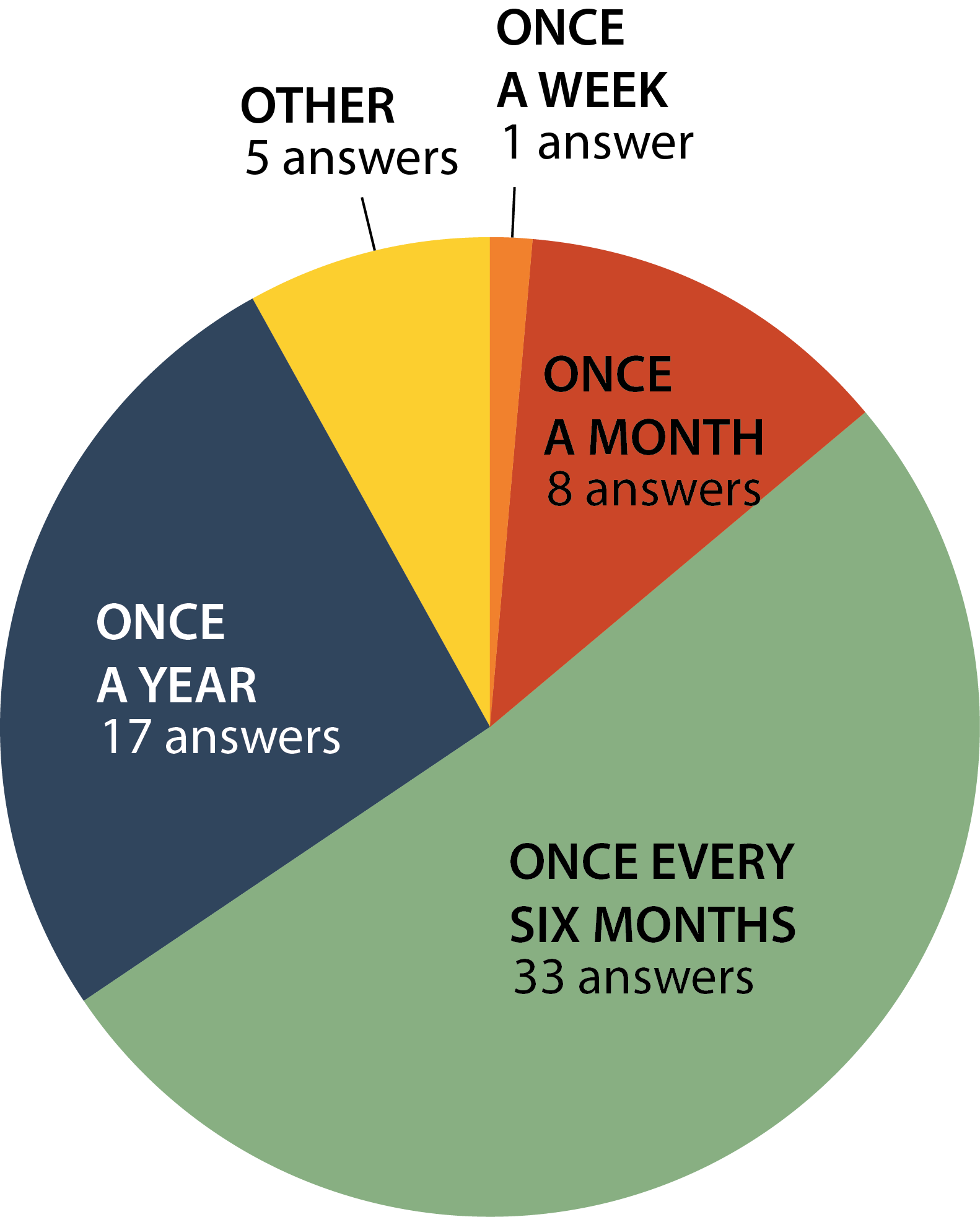CLOTHING CONSUMPTION; Clothing Choices and Sustainability

CLOTHING CONSUMPTION; Clothing Choices and Sustainability
Can there ever be enough clothes in the closet? Absolutely! The closet can become overcrowded, yet we continue to shop for new items after clearing out and getting rid of clothes we bought a year ago. Or do we? Have we developed a use-and-discard relationship with our clothes, or is it possible that we can actually grow fond of some of these garments we put on and take off every day? What are the clothing habits of Tora and Torvald in the agrarian metropolis? Are the students here as environmentally conscious as NMBU’s reputation suggests? The craving for “fast fashion” has become a habit, but we can actively engage with the choices we make. Read on to see how the measurement of students’ clothing consumption turned out.
Journalist:Ane Mathilde Runge Christensen
Illustrator: Andreas Kinnari
Translator: Sofie Palmstrøm
Web-distributør: Martha Ingeborg Evensen
It wasn’t long ago that the fourth Friday in November, also known as Black Friday, occurred. This tradition naturally comes from the promised land, the USA, and is actually a part of the Thanksgiving holiday. Of course, market liberalism has managed to turn this holiday into a huge advantage for retailers and for us consumers who feel the pressure of Christmas gift shopping or the desire to snag a deal. This day has apparently become so popular that it has grown into both a Black Weekend, Black Week, and Black Month. But is it always the case that good deals mean we have to buy? In 2021, Morten Jerven, a professor of development studies at NMBU, commented on this phenomenon, stating that “it is neither rational nor moral to shop on such days. It would be better for consumers if stores sold goods at the same price throughout the year. Then we could buy items when we actually need them and when it suits us.”
The counterbalance to this societal trend is found in the phenomenon of Green Friday, Green Weekend, Green Week, and Green Month. Here, a critical look is taken at the encouragement of consumption in a world where overconsumption is otherwise seen as a major contributor to the climate change and environmental challenges we face globally today. UN’s Sustainable Development Goals cover this through aspects such as clothing production, considering the use of chemicals, carbon emissions from energy consumption and transportation, as well as labor conditions, wage requirements, and the use of child labor. Often, clothing production is located in countries different to where purchasing power and fashion advertising are the greatest, so there is an imbalance in the production and consumption of clothes.
There are also many other problematic aspects of clothing production, including overproduction, the textiles and materials used, and the presence of plastic as a source of microplastics. Greenwashing of clothes and clothing chains also poses problems when trying to make conscious choices. Is it not allowed to like clothes, to enjoy acquiring new clothing items, and to be interested in fashion? Or should this interest go out of style? As consumers of clothing, we have many opportunities, and we can act more considerate regarding our consumption while also replacing what we have in our closets. After all, over 35% stated that they buy clothes because they “want new clothes.”
WHY DO YOU BUY CLOTHES?
WHAT KIND OF CLOTHES DO YOU MOSTLY BUY?
Green Friday is the antithesis of this consumption trend and is organized in many places, including in this country. Thanks to organizations like Spire Ås and NMBU Friluftsliv, this was also organized in Ås on November 24th. Both a clothing swap market in the community and the repair and upcycling of clothes at the student life center. The concept of upcycling has gained increased focus in recent years as one of several ways to reuse clothes and fabric. Jenny Skavlan is one of many who has contributed to the growing trend of recycling the utility of fabrics and old clothes.
These events shed light on our clothing habits as a contributor to overconsumption and are organized to encourage people to use their clothes for a longer time, and to repair them if something gets damaged. Spire explains that “... it’s nice to give them to a fellow student if the clothes no longer fit or if you simply don’t like them anymore”. Furthermore, they aim to make people reflect on their habits and “reflect on the environmental and social consequences of overconsumption, also for their own economy... It’s... foolish to buy something just to use it a few times before it ends up at the back of the closet (or in a landfill on the other side of the globe).” According to the Tuntreet survey on clothing consumption, over half choose to repair their clothes themselves or seek help to repair them if they are damaged.
HOW OFTEN DO YOU BUY USED CLOTHES?
HOW OFTEN DO YOU BUY NEW CLOTHES?
Naturviterne also contributed to this year’s Green Friday event, this time with a plant swap market. They often organize independent clothing swap markets and plan the next one for the fall of 2024. “We want to contribute to reducing clothing consumption and focus ... on the circular fashion industry where you can renew yourself without having to buy something completely new. The clothes are new to you anyway.” Furthermore, naturviterne see a responsibility in raising awareness on the topic: “Naturviterne reach more people than individuals, so we think it’s a good initiative... to use our platform to make it easier for others to make more environmentally friendly choices... many students also have a tight budget, so such an event is very nice.” After all, over 70% of the students in the clothing consumption survey stated that price is one of the things they are most concerned about when shopping for clothes.
The students in Ås are under scrutiny, and as clothing consumers, it seems we don’t completely dismiss sustainability ideals (if there is any agreement on what sustainability actually is or what it has become...?). In addition to being concerned about the price range of the clothes they buy, over 70% state that the material of the fabric, clothing quality, and functionality are important to them. However, ethical production and the sustainability of clothes are less important than style and fashion when it comes to clothing choices, without any other connection to the brands and logos on the clothing product. Perhaps we care more about how we look than being a walking billboard?
Comparing with the rest of the country, the average Norwegian has 350 pieces of clothing. However, the number itself is not a problem; it’s the consumption! If we dissect the concept, it’s not about how many clothes you have, but the relationship between how many clothes you buy, use, and discard. In other words, seeing clothes from a lifecycle perspective. Apparently, students in Ås don’t buy clothes as often, according to the survey. Approximately 50% buy new clothes once every six months. No one can deny people the right to buy new underwear. However, more students buy used clothes a bit more often than new ones.
Less than 10% said they throw away clothes if they are damaged, and over 12% said they prefer to buy new ones as a replacement. Apparently, the majority of the surveyed students have a pragmatic approach to why they buy clothes: because they need them! However, there is room to question the subjective nature of this need. Many factors influence our choices, even in a “green shift in clothing consumption.” Awareness as a measure is a start, where events like Green Friday can have an impact!
“Greenfluencers,” as a counterpoint to what many associate with influencers, can also use their visibility to create engagement. Knowledge comes as a consequence of becoming aware, which can, in turn, generate a desire to influence the direction we cannot let go of today. “Fashion revolution” is one of the most visible activist fashion movements working for a better clothing industry both ethically and environmentally. This is a universally engaging topic, and “Fremtiden i våre hender” and the Norwegian Society for the Conservation of Nature are among the organizations engaged in the issue.
UKA i Ås has a focus on sustainability through its environmental certification. Previous UKAs have also featured clothing swap markets, and there’s the possibility of a repeat in UKA i Ås 2024: “The motivation to organize events with a focus on sustainability, such as clothing exchange days, is based on which events we believe resonate with students and are relevant for them to participate in.” It’s not yet confirmed whether such an event will take place, as they are still in the planning phase. They emphasize that “there is a very high focus on sustainability throughout the organization. This focus is related to the implementation of the festival as a whole and not to the events individually.”
Samfunnet hosts many theme parties throughout the semester. It’s rare for a month to pass without the opportunity to dress up. We are very focused on getting the right beverages for pre-parties and looking somewhat appropriate for the theme. But how much do we think about the choices we make to dress up? Do we always have to buy a new costume? There are many other options besides buying new clothes to get a new garment to wear, such as clothing rental and thrift stores, to name a few.
IF YOUR CLOTHES ARE RIPPED OR RUINED...
In fact, you can also find clothes that go beyond the use of “costumes and dressing up.” Yes, you can even turn it into a treasure hunt! Everything from Fretex and Uff to Ås’ own Gjenbruken may have a clothing item you really want. During 2023, there has been an increase in the purchase of used clothes, even when it comes to online shopping for used clothes on platforms like Finn and Tise. A total of 48.4% state in the student survey that they mostly buy used clothes, relatively evenly distributed with purchases of new clothes.
As if the month of November is the prime example of our consumption, it’s only the humble beginning of the time we are entering now: the Christmas rush! Maybe we can use the time before Christmas to think about whether we actually need the sweater we want for Christmas? Or if we should buy that “funny” T-shirt for Dad? The answer might not be a simple yes or no. It could have a follow-up question: Can I get the same thing used? If I wish for or buy something new as a gift, am I considering the quality of the garment, how it’s made, or what it’s made of?
Without pointing any fingers, a good rule of thumb is that quality should take precedence over quantity when it comes to clothes (with underwear as the exception— third thime is not the charm when it comes to wearing underwear). If you get tired of the sweaters you no longer wear at the back of your closet, you can visit the next clothing swap market in Ås. There, you can find something you want and get rid of what you no longer use. Good for the environment, your wallet, and for feeling good in the clothes you wear!








